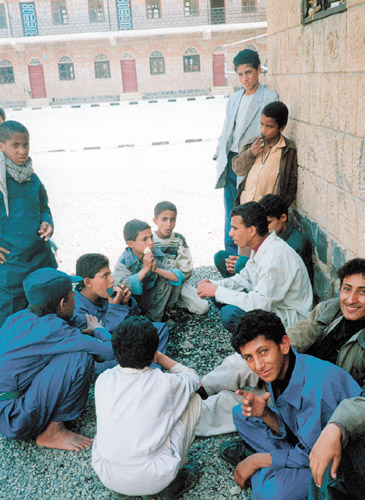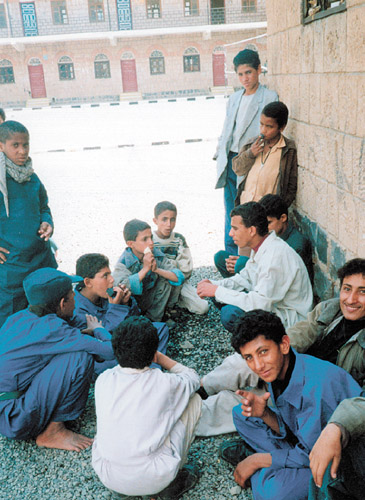
Miserable Conditions of Children in Yemen [Archives:2001/22/Reportage]
May 28 2001
Yasser M. Ahmad
Yemen Times

I will shed some light on this fundamental human issue as it exist in our society. The child population census conducted during the past ten years indicate that children constitute one of the biggest sectors in society. Studies also show that there is a big gap between the number of women in proportion to men in many governorates. The high rate of fertility has led to the population growth rate.
Child cultural and social studies indicate that there is a clear deficiency in the child care due to many reasons of which illiteracy is the most outstanding. Illiteracy of parents and of society in general has a strong impact on children. Their needs including food, clothes, medicine and personality development are hardly taken care of. The limited atmosphere children live in may lead to revolt against their parents. They may take to streets and fall in bad company. They may take to begging which is a very negative phenomenon on the increase. Others are constrained by hard economic conditions of their families and forced to work causing school drop outs.
Studies concerning children’s health issues showed that primitive medical tools were still used in villages which in turn increased the death rate among children.
Young women prefer to deliver babies at home than aged women. The rate of deliveries at home in town is estimated at 76% and that in the countryside at 56%.
Statistics also reveal that the cases under the supervision of a qualified medical doctor are estimated at 15,3%, 7% under the supervision of a qualified midwife, 21% by traditional midwives, 52% by relatives and 5% with no one’s help.
Results of studies also indicate that infant mortality due to the six curable diseases is also very high. The facilities for vaccination and nutritious diets are more readily available than in villages. Malnutrition is the main reason behind health problems for Yemeni children.
Studies on education of children indicate that most of the children do not have access to nursery and kindergarten except for a small number. Moreover, the primary schools can not accommodate all the students eligible to register which means that a big percentage of children are deprived from education.
Studies pertaining to the legal status of children indicate that legislation and regulations derived from the Islamic principles have ensured a good atmosphere for children, through there is a gap between the rhetoric of these legislations and the reality. A number of children are locked in prisons without any legal warrants. Others are subjected to assault, violence and sexual harassment as they are locked in with adult prisoners.
Most of the perverted children who take to thefts, adultery or gangs are vulnerable due to economic, psychological and educational factors. Lack of peace in the family, deprivation of children and their susceptibility fall in bad company can be the breeding ground for the perversion of children. Besides, the lack of clear policies in dealing with juvenile delinquency has increased inclinations in this section of society. Studies also indicate that there is a clear deficiency in health care for this section.
The begging phenomenon has been the focus of most of the researches and studies conducted in the past few years. Studies have confirmed that the phenomenon is very much related to poverty. Children may be exposed to many dangers especially if they were girls. Begging also increases burden on unemployment. Studies indicate that economic and social hardships leading children to beg may be a recent phenomenon. However, this easy money-earning prospect inclines them and their families to continue this practice.
Studies conducted on child labor are many. Child labor stems very much from poverty and the low standard of living. School truancy has made the situation worse. Child labor in Yemen is manifested as children working as peddlers in streets and roundabouts, as restaurant workers, waiters, workshop assistants, and car cleaners, etc. A study indicated that 15% of working children do not join in primary education; 97% of working children are from illiterate families; and 23% of working children smoke and chew Qat.
Some of these studies have recommended some solutions to curb the problem. They have suggested activating the social security network, creating new job opportunities for idle parents, drawing up policies and programs to train children and make use of the media to promote awareness of the dangers of child labor as remedies.
Some studies have dealt with the handicapped children, the unhealthy living conditions, lack of vaccination, infection and delivery problems on the part of mothers are some of the causes. The same studies also indicated that most of the handicapped children do not join the educational system as there are no schools and institutes for them.
——
[archive-e:22-v:2001-y:2001-d:2001-05-28-p:./2001/iss22/report.htm]


